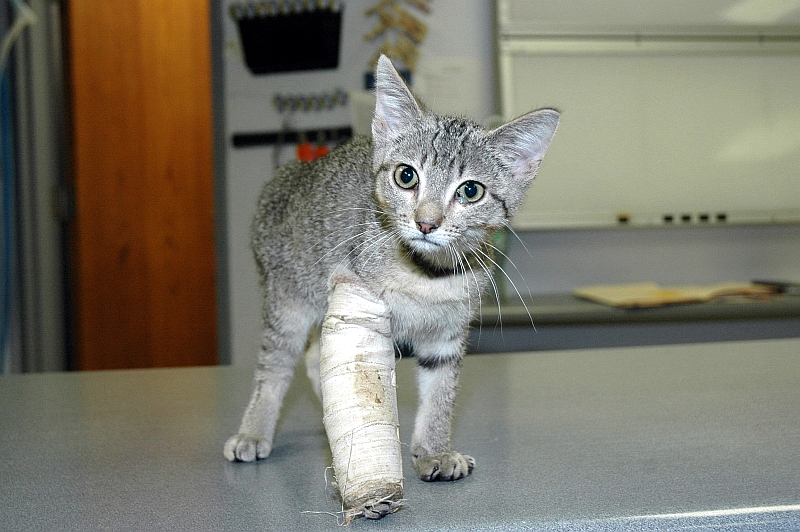Dogs and cats are curious creatures who have a tendency to get into binds and scrapes when they are allowed to explore freely. Sometimes a pet will slip unexpectedly on a wet surface, or may get caught between objects without realizing it, and pull away quickly, accidentally damaging the ligaments and bones of a certain limb. Whatever may have brought about the unfortunate incident, a pet owner should always be prepared on how to assess and injury, how to care for and transport the victim to the vet. Here are some helpful tips about what to do if your dog or cat gets a fracture.
Signs of a Fracture
The bones most commonly broken are the femur, pelvis, spine, skull or jaw. Fractures and breaks are usually characterized by being “opened” or “closed,” meaning that the bone is either exposed as an open wound, or it remains under the skin. In an open fracture, there is a risk of infection, and with closed fracture there is a risk of internal bleeding. Both ought to be treated right away by a medical professional. Keep your eyes out for these indications of bone trauma:
- Swelling
- Limping
- Whimpering
- Avoiding one leg, or inability to put weigh on a leg
- One leg appearing shorter than the others (due to being raise up, or held close)
- Note: In open fractures, both blood and the bone will be visible.
What To Do When You Find a Fracture
- If your dog or cat has a fracture, the first step will be to calm him. Speak gently to the animal, and fix a muzzle around his face so that you can help prepare him for transportation without risking him snapping at you defensively (which pets tend to do when in extreme pain).
- If the wound is bleeding, take a thick gauze pad over the wounded area, and wrap it securely with binding to stop the bleeding. (Most care providers recommend cleaning the area with water and soap before doing so.)
- If the fracture is closed (meaning no skin is broken), we recommend leaving it as is, since incorrectly wrapping a fracture could actually cause more damage than good.
- Lay the pet on a flat surface that can be lifted, such as a cot, board, or stretcher of some kind so that the injury is not disturbed at all while transporting him to the vet.
- Take the cat or dog to urgent care at the pet hospital as soon as you can so that the fracture can be set and bound.

